Gulfood
17 To 21 FEB 2025 | DUBAI WORLD TRADE CENTRE
We’re excited to see you at Gulfood 2025!
Gulfood
17 To 21 FEB 2025 | DUBAI WORLD TRADE CENTRE
We’re excited to see you at Gulfood 2025!
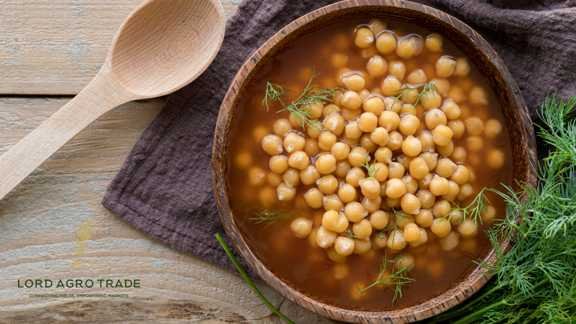

Kabuli chickpeas, characterized by their silky and slightly nutty taste, are a choice of many people when it comes to their world-leading consumption of pulses. Moreover, not only are the legumes known for being larger and having a light beige color but they are also rich in protein and fiber.
As the number of plant-based eaters is growing and the trend of eating healthy food is gaining popularity, the chickpeas are the first to share the spotlight, representing the health-bringing and nutrient-dense food. However, what is the real secret of their nutritional profile that makes them distinctive among the legumes? This article is going to give a thorough insight into the nutrition of the kabuli chickpeas and reveal the reasons why they are entitled to be a part of a balanced diet.
Kabuli chickpeas, undeniably, fall into the category of the two major chickpea types, and they are generally known for their large size, lig… chickpeas which have a geographically broad-spread recognition of their larger size, lighter beige color, and smooth texture, are the first variety.
On the other hand, the Desi species is distinguishable by its rougher skin and more irregular, angular shaped appearance, having, thus, a different texture and size, the major one being rough and small. The name “Kabuli” is assumed to have originated from Kabul, Afghanistan and in the city, these chickpeas are said to have been grown since ancient times.
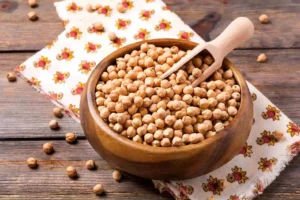
The main contrast between Kabuli and Desi chickpeas is evident by their physical appearances, the localities where they are grown, and their uses in cooking:
Appearance: Kabuli chickpeas are generally bigger and fuller with a white to off-white color, giving them a cylindrical shape. The smooth nature and thin covering enable them to cook and be digested easily.
Desi chickpeas are, on the contrary, smaller, and with dark colors (mostly brown, black). The seeds of Desi chickpeas are also coarser and heavier due to the thick and hardy outer coat they have.
Cultivation Regions: Kabuli chickpeas are the predominant variety of chickpeas in regions such as the Middle East, North Africa, India, Canada, parts of Europe, and South America. While Desi peas are mainly sown in countries like India, Ethiopia, Mexico, and Africa.
Culinary Uses: The cooking up of Kabuli chickpeas for the production of items such as hummus, salads, and stews is common due to its characteristic of mild flavor and the creaminess of the product when it’s cooked. The usual way of serving Desi chickpeas would be grinding them into powder (besan) and then incorporating them into Indian snacks like pakoras and also the preparation of chana masala.
Major differentiation that exists between Kabuli and Desi chickpeas comes from some of their traits like appearance, the regions of their growth, and their cooking purposes:
Appearance: The Kabuli chickpeas are generally considered to be of a bigger size and fuller with a whitish and creamy color, which gives them the shape of a cylinder.
Having a sleek surface and a thin membranous layer lets them be prepared and eaten without any problems. In contrast, the Desi chickpeas are small with dark (mostly brown, black), rough-surfaced seeds. These seeds are also rougher and heavier compared to Kabuli’s due to Desi’s strong and thick outer coat that they have.
Cultivation Regions: In addition, Kabuli chickpeas — the variety of chickpeas that have been the most common in the Middle East for ages — are widely spread across the world. Desi chickpeas, meanwhile, in the main, are sown in countries such as India, Ethiopia, Mexico, and Africa. Culinary Uses: One of the typical ways of utilizing Kabuli chickpeas is producing hummus, salads, and stews. This is predominantly because of the delicate flavor and the creaminess of the product when it is prepared.
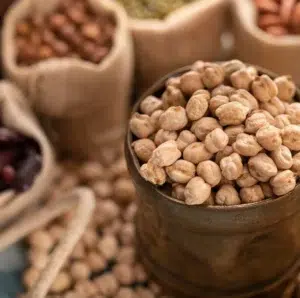
Kabuli chickpeas are not just delicious, but also packed with nutrition. They’re a fantastic source of plant-based protein, making them perfect for anyone following a vegetarian or vegan diet.
Besides protein, they’re rich in both soluble and insoluble fiber, which helps keep your digestion smooth, balances blood sugar levels, and supports heart health by lowering cholesterol.
You’ll also find important vitamins like folate (vitamin B9), which is key for cell growth and DNA production, and vitamin B6, which plays a big role in keeping your brain healthy.
Kabuli chickpeas are loaded with minerals such as iron, magnesium, phosphorus, and potassium — all essential for energy, strong bones, and proper muscle function.
Thanks to their complex carbs and fiber, these chickpeas have a low glycemic index, meaning they release energy slowly without causing sudden blood sugar spikes.
Adding Kabuli chickpeas to your meals can boost your overall health, improve digestion, aid weight management, and lower the risk of chronic diseases like heart disease and type 2 diabetes.
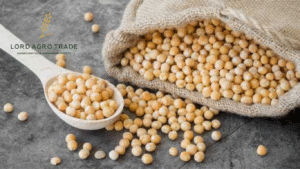
If you’re thinking about adding Kabuli chickpeas to your meals, it’s good to know what makes them so nutritious. Here’s a simple overview of what you get in 100 grams of cooked Kabuli chickpeas:
| Nutrient | Amount (per 100g cooked) |
|---|---|
| Calories | 164 kcal |
| Protein | 8.9 g |
| Total Fat | 2.6 g |
| Carbohydrates | 27.4 g |
| Dietary Fiber | 7.6 g |
| Folate (Vitamin B9) | 172 µg |
| Vitamin B6 | 0.14 mg |
| Iron | 2.9 mg |
| Magnesium | 48 mg |
| Phosphorus | 168 mg |
| Potassium | 291 mg |
Kabuli chickpeas stand out when you compare them with other popular legumes:
They have more protein than many lentils and peas, making them a fantastic plant-based protein source.
They’re packed with dietary fiber—more than kidney beans and black beans—which is great for digestion and keeping blood sugar steady.
They contain moderate amounts of mostly healthy fats, unlike some legumes that are very low in fat.
They provide important minerals like iron and magnesium, essential for energy and muscle health.
In short, Kabuli chickpeas offer a great balance of nutrients that can fit well into a healthy diet.
Kabuli chickpeas are more than just tasty—they’re a nutrition powerhouse. Here’s why adding them to your diet is a smart move:
Excellent Plant-Based Protein: Great for vegetarians and vegans, the protein helps repair muscles and maintain overall body health.
Blood Sugar Friendly: Thanks to their low glycemic index and high fiber, they help keep blood sugar levels steady, which is especially helpful for managing diabetes.
Better Digestion: The fiber content promotes healthy digestion, prevents constipation, and supports good gut bacteria.
Weight Management: The fiber and protein in chickpeas help you feel fuller longer, which can reduce overeating and aid in weight control.
Heart Health: They’re rich in heart-healthy fats and potassium, plus fiber that lowers bad cholesterol, all supporting a healthy heart.
Including Kabuli chickpeas in your diet is simple and delicious! Here are some ideas:
Salads: Toss cooked chickpeas into fresh salads with veggies and a tangy lemon-tahini dressing.
Stews and Curries: Use them in dishes like chana masala for a filling and hearty meal.
Hummus: Blend chickpeas with tahini, garlic, lemon juice, and olive oil to make classic, creamy hummus.
Soups: Add them to soups for extra protein and texture.
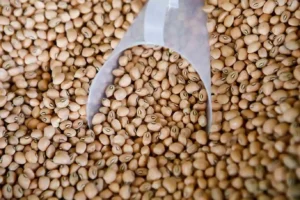
Soak overnight: This cuts down cooking time and helps digestion.
Cook gently: Simmer instead of boiling rapidly to keep them tender without breaking apart.
Don’t overcook: Aim for a firm but cooked texture.
Add salt late: Salt can toughen the chickpea skins if added too early.
Save the cooking water: Aquafaba (the cooking liquid) is rich in nutrients and can be used in baking or soups.
| Legume | Protein (per 100g cooked) | Fiber (per 100g cooked) | Calories (per 100g cooked) |
|---|---|---|---|
| Kabuli Chickpeas | 8.9 g | 7.6 g | 164 kcal |
| Lentils | 9.0 g | 7.9 g | 116 kcal |
| Kidney Beans | 8.7 g | 6.4 g | 127 kcal |
| Desi Chickpeas | 9.0 g | 8.0 g | 175 kcal |
Why Choose Kabuli Chickpeas?
They offer a nice balance of protein and fiber with fewer calories than Desi chickpeas.
Their mild flavor and smooth texture make them easier to digest and versatile in recipes.
They provide more energy than lentils and kidney beans, great if you need extra fuel.
Rich in heart-friendly nutrients like potassium and healthy fats.
Kabuli chickpeas are a nutritional gem—packed with protein, fiber, vitamins, and minerals. They support blood sugar control, improve digestion, boost heart health, and help with weight management. Whether you add them to salads, stews, or snacks, they’re an easy way to make your meals healthier and tastier.
Start including Kabuli chickpeas in your diet today and enjoy all the benefits this humble legume has to offer!